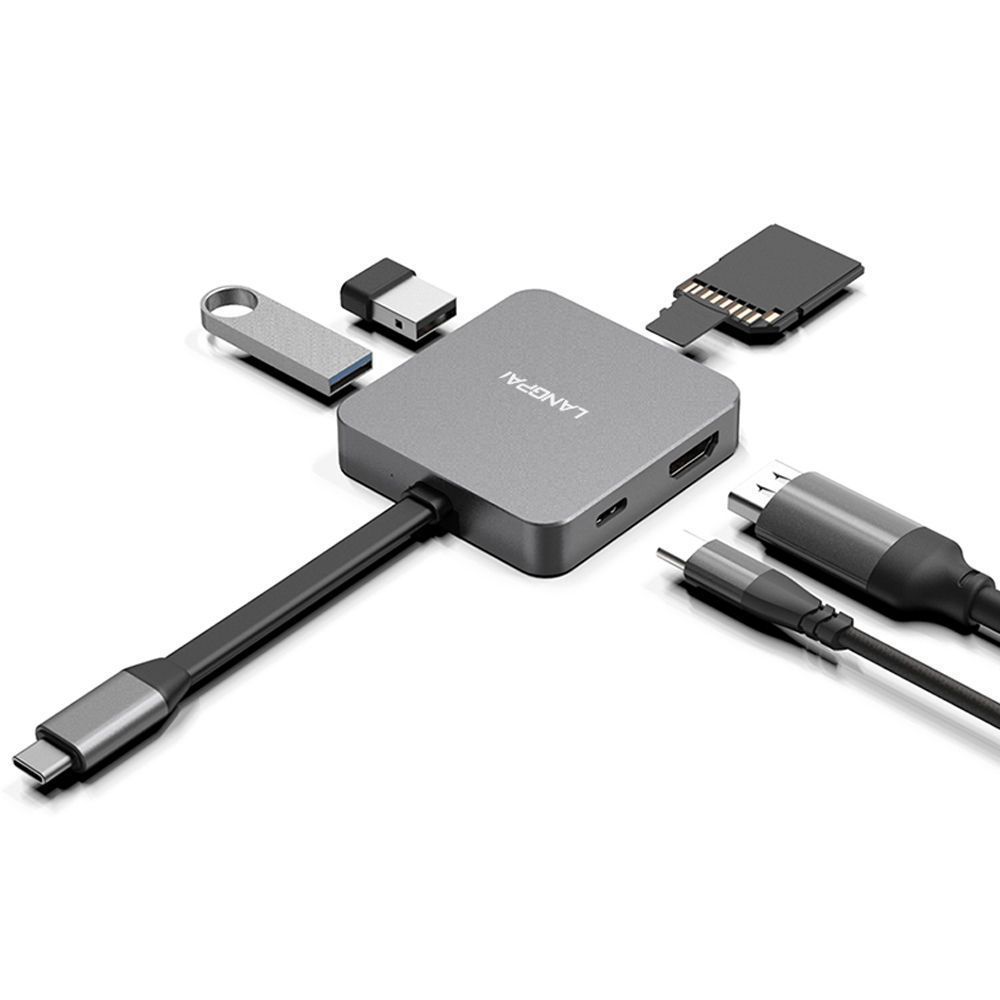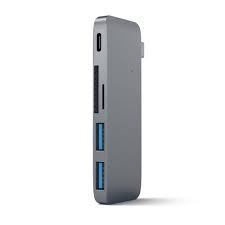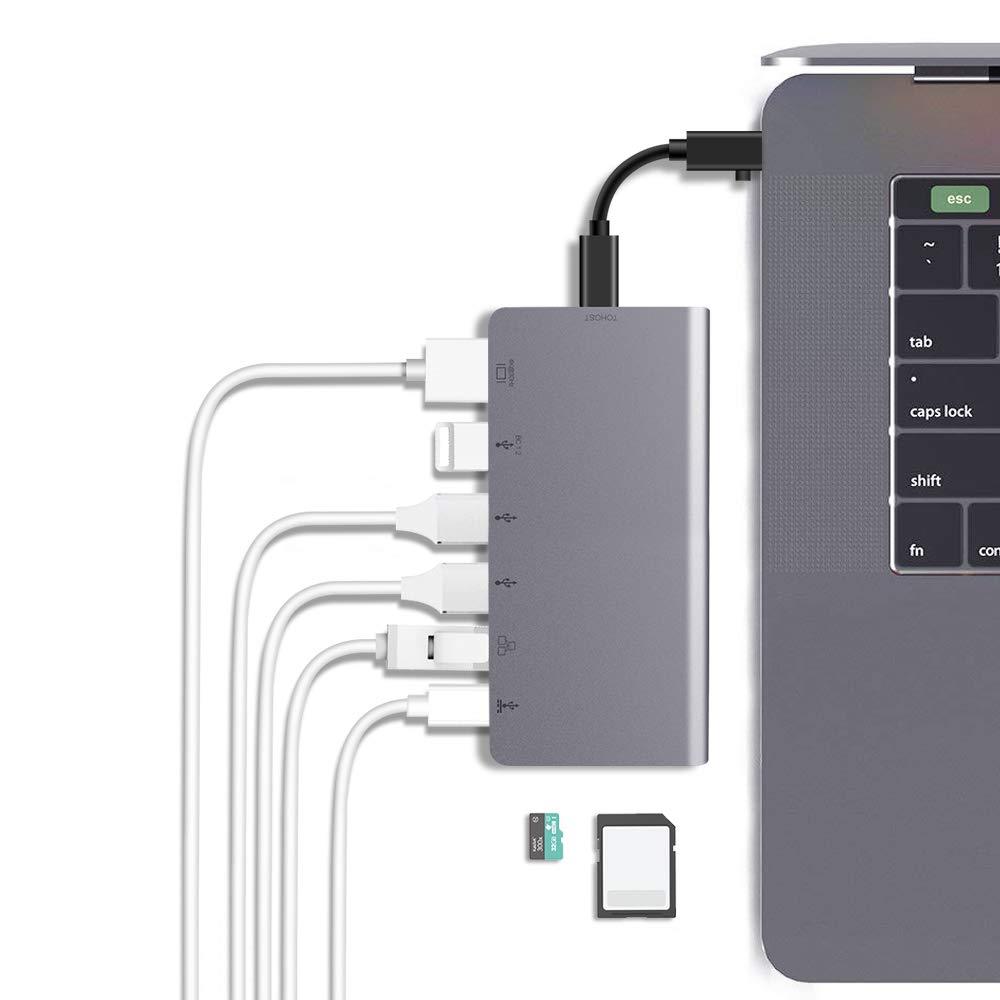USB C to USB Hub - Introduction, Importance and Conversation Technique
What is USB C to USB C Hub Conversion and Why is It Gaining Popularity?
USB C to USB C Hub conversion is gaining increasing importance with each new update in the Tech-world. USB C has already conquered most of the latest devices and has virtually replaced all the older ports. And soon, it will push its ancestors towards extinction and individually rule the realm of USB connectivity.
However, USB C might individually preside over the world of device connectivity, but it cannot rule independently. USB C port is incompatible with almost all the peripherals that people commonly use because they either have a USB A or USB B connector.
You May Also Read: How USB C Hub with Ethernet Offers Versatile Connectivity?
Therefore, the USB C port takes away much of a laptop's flexibility. And without the support of a hub, the port itself is restrained only to devices with USB C connectors, which right now are quite limited in number.

What is USB C?
USB C is an innovation of the USB-IF that has manifested itself as a new port and connector configuration. Made public in 2014, USB C took a while to enter the mainstream USB world. However, only a few years after its first public appearance, USB C has successfully managed to wiggle its way into almost all the latest devices. From Laptops to Smartphones, many devices now come with a USB C port.
What is so special about USB C that it is likely to replace its seasoned ancestors-the USB A and USB B for good? Many factors contribute to USB C's popularity, the most significant factor, for most people, being its reversibility. USB C always connects in one go. Unlike previous ports, you do not have to keep flipping the connector to make it connect. Moreover, USB C supports USB 3.1 or Thunderbolt standard, making it capable of high-speed data transfer.
Explaining the Connection
Like every coin has two sides, a good and a bad, USB C has a downside too. One and probably the only aspect that has restricted its popularity is its incompatibility. USB C port's inability to connect almost all the standard peripherals that people use today is its biggest drawback. And USB C's inadaptability is why we still see some older ports on newer Laptops. Otherwise, by now, with its capabilities, USB-C would have long replaced the older USB ports.
However, some devices make up for USB C's incompatibilities and return to the laptops the flexibility that their USB C ports have snatched from them. These magical devices are called USB C hubs or docking stations.
A USB hub bridges the gap of incompatibility between computers and supplementary devices. USB C hubs come with a USB C cable and multiple ports of different kinds. The Hub's connector occupies the C-port of the computer and makes it flexible enough to accept all the connectors that the Hub has ports for.
There are many benefits of a USB C to USB C hub connection. And the USB C port's seemingly stagnant incompatibility is giving rise to the demand for USB C hubs.
Importance of the Connection
A USB C to USB C hub is a device with many capabilities. Each of its abilities is unique and thus adds to its importance. Some of the factors that make owning a USB C hub important are:
One Port-Many Connectors
Parting ways with something you have grown accustomed to is complicated. The biggest problem that people with USB C supported laptops face is the inability to use the peripherals they have become habitual of using.
Different USB C hubs come with a different combination of ports. You can pick a Hub for you that seems capable of accepting all your devices. For example, if you have a keyboard, a mouse, and an external hard disk. Your Type-C port laptop will not allow you to use it while working on it. But by connecting a USB C hub that has 3 Type-A ports, you can enjoy using your laptop along with your favorite peripherals.
In this way, a USB C to USB C hub connection eliminates the need to say goodbye to your favorite keyboard, mouse, and other devices by making your new laptop-compatible with them.
Multiple Screens
Many people prefer working on multiple monitors due to the boost in productivity that increased screens offer. The preference for working on multiple screens is another factor that adds to the ever-rising importance of the USB C hub.
Laptop manufacturers are decreasing the number of ports with each new version of their products. Hence connecting a monitor with one of the more modern laptops has become nearly impossible without a USB C hub.
USB C to USB C hub connection provides you with multiple ports for display output. USB hubs come sporting HDMI, DP, and VGA ports. Some hubs are capable of up to 4k dual HDMI resolution output while also providing a DP output.
Thus, USB C hubs empower you by providing you with ports for connecting your favorite monitors so that you can enjoy working conveniently on multiple screens.

Power Delivery-Fast Charging
How annoying and immensely stressful is it when you are away from home, and your phone is about to die. And adding to the stress is the realization that you forgot to keep your phone charger while packing all your computer accessories.
USB C hub solves this problem by providing Power Delivery ports that can promptly recharge your phone and even your laptop. So, as long as you have your hub with you, you don't have to worry about forgetting your charger at home.
Some USB C to USB C hub connections come with ports offering up to 60 W of power delivery, while others offer 100 W power for charging smartphones, tablets, and laptops.
Allows for High-speed Internet
Many people prefer using ethernet over Wi-Fi because of the high-speed internet connection that it provides. But with laptops dropping their number of ports, an ethernet port is often the first one to go. Thus, many newer laptops, because of their inability to connect an ethernet cable, restrain their users to unreliable and slow internet.
And guess who comes to the rescue, once again? The USB C hub (if this isn't analogous to a one-man army, I don't know what is!). This device, while providing all sorts of ports, also comes with a Gigabit Ethernet jack. Thus, it allows its users to break the slow Wi-Fi shackles and go back to enjoying a reliable and fast ethernet connection.
File Sharing Between External Memory Devices.
Almost all the USB C hubs come with slots for SD, micro-SD, and TF card readers. These slots allow users to transfer files from their computer and memory card with ease. Moreover, many ports in the USB hubs are of USB 3.1 or Thunderbolt 3 standard, which allows high speed (up to 40Gbps) file transfer.
How to Convert?
Connecting USB C to USB C hub is as effortless as anything can get. Most hubs require a driver installation before you can start using them. Your computer either automatically installs these drivers when you connect the Hub to your laptop, or you may need to install them manually. You may even need to download the hub drivers and then proceed with the installation in some cases.
However, many USB C hubs boast a plug-and-play feature. This means you don't have to download or install any drivers before you can use your new Hub. Just plug it in and enjoy the newly enhanced flexibility of your precious computer.

To Sum it Up
USB C hubs have secured a permanent place in their user's lives. They have achieved this milestone by allowing its users to continue using their favorite peripherals even when their laptops are no longer compatible with them.
Moreover, USB C to USB C hub by connecting to ethernet cable also allows its users to enjoy using high-speed internet. And with its power delivery port, it is even replacing bulky mobile phone chargers.
USB C has just taken off and is probably in for a long flight. Soon, we will see an increasing number of devices sporting this port configuration. And as long as it is in the field, the USB C hub will continue on its upward journey of popularity because, without its hubs, the USB C port might not satisfy its users well.
For More Products, Visit Our Product Catalogue!
You May Also Read: A Guide to Buying the Right USB Type C Adapter HDMI








